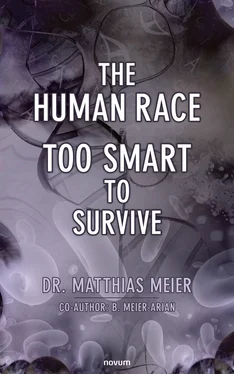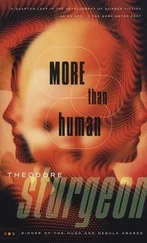Furthermore, there is a considerable discrepancy in global prices for medicines. “Medbelle” published a study7 in November 2019 that compared the prices of commonly prescribed drugs on the world market in 50 countries. The drugs in question were those for erectile dysfunction, epilepsy, fibromyalgia, lowering cholesterol, asthma, antibiotics, diabetes, immunosuppression, female hormones, panic attacks, high blood pressure, arthritis, skin disease, etc. Prices in the USA were clearly at the top, with the price of the active ingredient deviating by 421% above the median. For some active ingredients, it was up to 2000% above the international average. Germany was in second place with an upward deviation of 105%, while Thailand had the lowest prices. In line with this, overall health can be very expensive in the U.S. Harvard University showed that among all reasons to go bankrupt, healthcare expenses ranked the highest at 62%, even with existing health insurance.8 Serious illnesses can quickly cost hundreds of thousands of dollars, which can rapidly deplete financial resources for most people. Approximately 530,000 families are affected annually.
2https://edition.cnn.com/2017/09/18/health/opioid-crisis-fast-facts/index.html
3https://edition.cnn.com/2017/09/18/health/opioid-crisis-fast-facts/index.html
4https://www.incb.org/documents/Publications/AnnualReports/AR2016/English/AR2016_E_ebook.pdf
5https://www.drugabuse.gov/publications/research-reports/relationship-between-prescription-drug-heroin-abuse/prescription-opioid-use-risk-factor-heroin-use
6https://www.bbc.com/news/world-us-canada-47861444
7https://www.medbelle.com/medicine-price-index-usa
8https://www.thebalance.com/medical-bankruptcy-statistics-4154729
Chapter 3 - Minerals, the Hidden Heroes
Knowledge of our physiology has increased dramatically in recent decades. The foundations were laid primarily in the 19th century when technological advances also changed the world of medicine. Chemistry, biochemistry, and physiology were increasingly surveyed and researched in a scientific and methodical manner. The idea emerged that perhaps some illnesses were just a deficiency of some vital nutrient and that replacing the right element would restore health. This is an entirely different approach from the theory that diseases are caused by “too much” of external influences, for example, bacteria or toxins.
In 1755, a report was published by Gaspar Casal describing a case of “pellagra,” a disease not known in Spain at the time, that was characterized by skin lesions, diarrhea as well as a dementia-like development, and which, interestingly enough, became significantly more frequent in the spring. Those affected were mostly poor, and their nutrition subsisted on cornmeal/corn grits with no access to milk or meat. In Italy, similar reports were made public, and here too it was mainly the poor who were affected. At first, too much corn was thought to be the cause, since corn was first imported into Europe by the Spanish after they colonized South and Central America. However, in these countries, corn did not cause the same symptoms, although the rural population also had little access to milk and meat. The difference was found in the processing of the corn. The Mexicans soaked the corn in a wood ash mixture, while the Europeans made the corn into polenta, which could lead to contamination with fungi or toxins. Further theories circulated until an American named Joseph Goldberger administered milk and eggs to sick people and thus was able to make the symptoms disappear9. This was reproduced and verified in various countries in Europe and the U.S., revealing that pellagra was a deficiency of a vital nutrient (nicotinic acid or vitamin B3).
In 1849, Thomas Addison wrote of a potentially fatal anemia called “pernicious anemia”. It was characterized by reduced but enlarged red blood cells. Vitamin B12 was later identified as the missing element, but absorption in the intestines is only possible through an “intrinsic factor” found in the stomach and intact gastric acid, both products of intact gastric cell metabolism.
Beriberi was a disease not uncommon in rice-rich Asian cultures in the 19th century, characterized by fatigue, impaired concentration, tremors, abdominal pain, burning of the feet, and even paralysis and heart failure. On longer sea voyages, up to 60% of the crew became ill and 25% died. Both deaths and the onset of the disease were prevented entirely by the introduction of barley, milk, beef, and tofu. At first, it was speculated that the increase in protein intake made the difference. In further studies, the link between white and brown rice was established. 70% of prison inmates became ill with white rice as their main food source, while only 3% of inmates with brown rice in their diet became ill. In 1906, Norwegian bacteriologist Axel Holst found that symptoms in hamsters disappeared simply by feeding them cabbage and lemon juice. In the same year, Frederick Gowland Hopkins conducted an experiment on two groups of rats that were fed different diets. One group was fed casein, fat, starch, sugar and salt (essential nutrients known up to that time), the other group was additionally fed milk. Only the group supplemented with milk thrived. As a result, it was assumed that this disease was also due to a substance deficiency. In 1912, Casimir Funk researched the substances that were thought to be causative for the various diseases and called them “vital amines.” The word vitamin came into being in 1920, when it became known that not all vitamins contain amines.10 Funk was able to assign the individual vitamins to the various diseases, so that there was now a scientific explanation for the development of diseases due to a lack of nutrients. Other diseases such as scurvy (vitamin C deficiency) and rickets (vitamin D deficiency) could now be explained. Vitamin D deficiency was especially prevalent in cities during industrialization when people, especially the poor and children, had to work in coal-fired power plants and underground. Vitamin A was initially identified as the factor that caused the disease, but in 1922 it was discovered that the molecule originally called vitamin A consisted of a second co-factor: vitamin D.
In 1922, two scientists from the University of California identified vitamin E as a fertility factor in rats and used green vegetables and wheat germ as a source (Evans et al., 1922).
Scurvy was an epidemic among sailors who spent months on the high seas without fresh fruit or vegetables. In 1919, it was widely accepted that an isolated factor from citrus fruits could cure scurvy. In 1932, this factor was produced as vitamin C, and in 1933, it was renamed ascorbic acid (anti-scurvy acid).
In 1971, Linus Pauling (two-time Nobel Prize winner) recommended supplementation of vitamin C in high doses to prevent and treat colds as well as cancer and heart disease. Many benefits of vitamin C have been attributed to its role as a cofactor in the production of connective tissue (collagen), which is found in bone, skin, and vascular metabolism. The dose was set at 10–12 grams per day. To reverse arteriosclerosis (hardening of the arteries), he recommended 3–5 grams of vitamin C per day and 2 grams of L-lysine per day. On top of that, he also recommended vitamin C for cancer therapy. Pauling considered a dosage of 50 to 100 milligrams per day, which was considered sufficient for adults at that time, to be too low to have an optimal effect. However, his views and his vitamin C studies were not taken seriously by the scientific community, as the effects he suspected could not be proven in several clinical studies. However, a survey published in the journal Science in 2015 suggested, based on new molecular biology findings, that vitamin C does indeed have an anti-tumor effect (1–5). Several years ago, research at John Hopkins University showed that the growth of colon cancer cells (and other types as well) is driven by mutations in two genes, which promoted the formation of unusually high numbers of membrane transport proteins for glucose, or sugar. Glucose and glutamine are the main nutrients for cancer cells, so more transport proteins are needed in these cells for precisely that purpose. Vitamin C inhibits glucose metabolism in the cells and the cancer cells suffer from starvation, so to speak, since they are denied this source of energy. The administration of vitamin C for tumor therapy has a controversial history. While some clinical trials have demonstrated benefit, others have failed to confirm it.11 This discrepancy can be attributed, at least in part, to how vitamin C is delivered. Oral vitamin C therapy, unlike parenteral administration (injected into the veins or muscles) therapy, cannot achieve concentrations lethal to cancer cells. Intravenous therapy can achieve much higher concentrations in the blood with dosages of 7.5 to 45 grams per infusion.
Читать дальше












